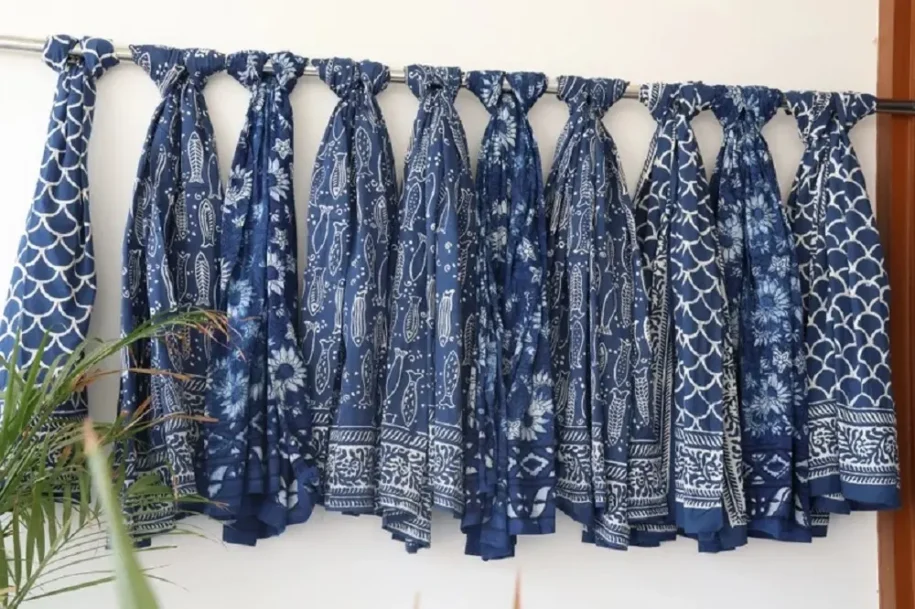The sarong wrap, a staple in many tropical and coastal cultures, has evolved significantly over the centuries, transforming from a traditional garment into a modern fashion piece worn across the globe. Initially utilized for its practicality and modesty, the sarong has become a symbol of versatility, comfort, and style. Sarong Wraps are now seen in beachwear, resort attire, and even as casual fashion statements in cities far from their cultural roots. This article takes a closer look at the evolution of sarong wraps, from their cultural origins to their place in contemporary fashion.
The Origins of Sarong Wraps
The term “sarong” is derived from the Malay word “sarung,” which means “bag” or “cover.” Historically, the sarong is a large piece of fabric, often wrapped around the body and tied at the waist. The garment is believed to have originated in Southeast Asia, where it was worn by both men and women as a simple yet functional garment to cover the body. The sarong was typically made from cotton or silk and was worn in a variety of ways depending on the culture and the specific region.
In regions like Indonesia, Malaysia, and Thailand, sarongs were commonly worn as a part of daily life, especially in rural areas. They were valued for their breathability, lightness, and ease of wear in hot and humid climates. Additionally, the sarong’s design made it easy to adjust to different body types and functions, which is one reason it remained such a popular garment across generations.
The Spread of Sarongs to Other Cultures
The traditional sarong spread far beyond Southeast Asia through trade, exploration, and colonization. In the 18th and 19th centuries, as European colonists began to travel to tropical regions, they encountered the sarong and were captivated by its simplicity and adaptability. The garment became popular among European travelers and settlers in the colonies, and its use gradually spread to other parts of the world.
In the early 20th century, the sarong found its way into Western fashion. Celebrities and international tourists began adopting the garment as a stylish, casual alternative to more formal attire. The image of the sarong as a symbol of exoticism and freedom helped cement its place in beachwear and resort fashion. Hollywood stars like Doris Day and Marlon Brando popularized the look in films, bringing the sarong to the attention of a global audience.
The Sarong in Modern Times
As the world grew more interconnected, the sarong evolved from a traditional garment worn in tropical climates to a piece of clothing that could be worn anywhere, especially in warm-weather destinations. Today, sarong wraps are no longer just for beach trips or exotic vacations; they have entered the world of high fashion and are seen as a symbol of both comfort and sophistication.
Modern sarongs come in a wide variety of fabrics, colors, and prints, making them suitable for any occasion. Traditional silk and cotton are still popular choices, but more contemporary versions feature materials like rayon, linen, and even synthetic fabrics. These fabrics offer additional durability, flexibility, and breathability, perfect for daily wear or a casual night out.
Sarongs in the Fashion Industry
As fashion became more globalized, designers began experimenting with the sarong to incorporate it into mainstream fashion. The versatile wrap made appearances on runways as a beachwear essential and even as part of formal wear collections. Fashion houses and designers now create sarongs with high-end fabrics and embellishments, such as sequins, beads, and intricate prints, turning this simple garment into an elegant statement piece.
One of the biggest shifts in the modern use of sarongs has been their adaptation for various types of occasions. They can now be worn not only as a beach cover-up but also as skirts, dresses, and even tops. Some designers have taken inspiration from the traditional sarong’s wrap-around structure, creating modern garments that borrow from the original concept while adding new twists for contemporary style.
The sarong also plays a significant role in the world of resort wear. It is no longer just a garment associated with holidays in the tropics but a part of the luxury resort experience. Many resorts now offer custom-made sarongs that guests can wear as part of their vacation wardrobe. The sarong has become synonymous with relaxation, sunbathing, and carefree vacation days.
Sarongs as a Symbol of Sustainability
With the growing focus on sustainability in fashion, the sarong has experienced a resurgence. As a simple, versatile, and multi-use garment, the sarong fits perfectly into the ethos of sustainable fashion. It is a lightweight piece that can be worn in various ways, reducing the need for multiple separate garments. In addition, many modern sarongs are crafted from eco-friendly fabrics like organic cotton, bamboo, and recycled materials, offering a stylish yet environmentally conscious option for consumers.
The rise in popularity of eco-conscious travel and sustainable fashion has seen many travelers and fashion enthusiasts turn to sarong wraps as an eco-friendly alternative to fast fashion. Sarongs are compact, easy to pack, and can be worn in numerous ways, making them ideal for minimalist wardrobes.
Cultural Appropriation vs. Appreciation
While the sarong has evolved into a modern fashion piece, its history and cultural significance should not be overlooked. For many indigenous cultures, the sarong represents more than just a piece of clothing; it is a symbol of tradition, identity, and heritage. As the garment has become more popular in Western fashion, it is essential to approach the sarong with respect and understanding, acknowledging its origins and cultural importance.
Contemporary discussions about cultural appropriation highlight the need to wear garments like the sarong in ways that honor the traditions and values of the cultures from which they originate. When purchasing sarongs or other cultural items, it is important to be mindful of where they come from, how they are made, and how they are marketed and worn.
Conclusion
From its humble beginnings as a practical garment in Southeast Asia to its status as a global fashion icon, the sarong wrap has experienced an incredible transformation. Today, it is a versatile and chic piece that can be worn in many different ways and for many different occasions. Sarong Wraps continue to bridge the gap between tradition and modern style, offering a beautiful blend of comfort, functionality, and cultural significance.
Whether worn as a beach cover-up, an evening dress, or a casual summer wrap, the sarong remains a timeless garment that is as relevant today as it was centuries ago. Its ability to adapt to changing fashion trends and global tastes proves that, despite its traditional roots, the sarong is a truly modern fashion staple.







